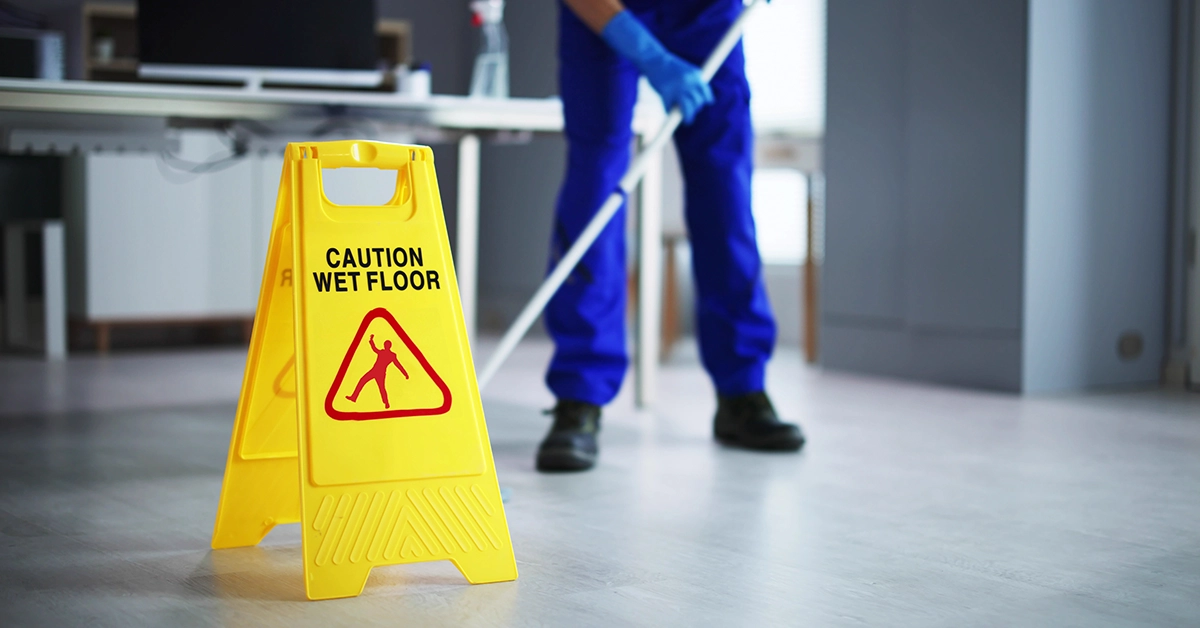Office Safety

Accidents do happen in the office. A broken bone sustained from a fall in an office costs just as much as a broken bone caused by a fall in the plant. Not all office injuries are serious, but even slight injuries may result in lost work days, which interfere with normal operations. The Occupational Safety and Health Administration estimates 40,000 office workers sustain disabling injuries each year, and that 200 of these injuries are fatal. In the office, slips, trips, and falls are the number one cause of disabling injuries followed closely behind with strains, overexertion, falling objects, and workers striking objects. Office safety is everyone’s responsibility. It involves two factors; the first is developing employee interest in safe practices both on and off the job and the second is correcting unsafe behavior. The following is a list of guidelines to prevent common office hazards from becoming accidents.
- Each office should have fire extinguishing equipment available, and there should be a training program for proper use of extinguishers.
- An evacuation plan should be in place with periodic fire drills and training.
- Do not throw matches, ashes, or cigarette butts into wastebaskets. If the building has been designated as smoke free, DO NOT smoke in the building.
- Inspect the workplace using an inspection form. If smoking is permitted, provide proper receptacles.
- Exit signs should be lighted and clearly visible and emergency lighting should be installed.
- Keep aisles clear to allow for easy travel and exit in the event of an emergency. Keep floors and walkways clear of electrical and telephone cables, boxes, etc.
- Doors, stairwells, and exits should not be blocked. These areas should be clearly marked.
- Stairs should be equipped with anti-slip treads, approved handrails, and adequate lighting.
- Store inks, solvents, and any other flammable or combustible liquid properly and use it in small amounts only.
- Store supplies inside cabinets, not on top of them.
- Items stored on racks and shelves should not be overhanging or protruding so as to cause personal injury.
- Trash and rubbish should be properly stored and discarded daily.
- Machines should be grounded and the use of extension cords should be avoided. Don’t overload wall sockets.
- Don’t touch electrical switches, sockets, plugs, etc. with wet hands.
- Non-carpeted walking surfaces should be swept and mopped frequently to prevent grease and dirt build-up. Carpeted floors should be vacuumed regularly.
- Spills such as drinks or water from umbrellas should be cleaned up immediately.
- Use signs or barriers to warn of wet floors.
- Loads of 40 pounds or more should not be lifted manually.
- Use a step ladder; do not climb on chairs, desks, or boxes.
- Ladders should be equipped with non-slip material on the feet and treads. They should also be suited for the purpose intended and properly maintained.
- Chairs should be stable and have at least a five-point base. Keep all legs of the chair on the ground.
- Armrests for chairs should be low and short enough to fit the chair under the work surface and allow the user to get close enough to the work surface to use the chair backrest.
- Thin keyboards should be used to minimize wrist deviation, or keyboard palm rests should be used.
- Repairs to broken or chipped furniture should be made immediately.
- A short rest break should be encouraged after each hour of video display work is performed.
- Do not leave file drawers or desk drawers open and unattended.
- Heavier items should be kept in the bottom drawers of a desk or filing cabinet.
- Work areas should be well illuminated. Glare should be reduced by lowering the lighting. Window glare can be reduced by providing drapes or blinds.
- Always look where you are going, and walk, do not run.
- A physician-approved first aid kit should be available for emergency use.
- Watch for any unsafe conditions such as defective equipment, burned out lights, loose steps, torn carpet, etc. and report them to your supervisor immediately.